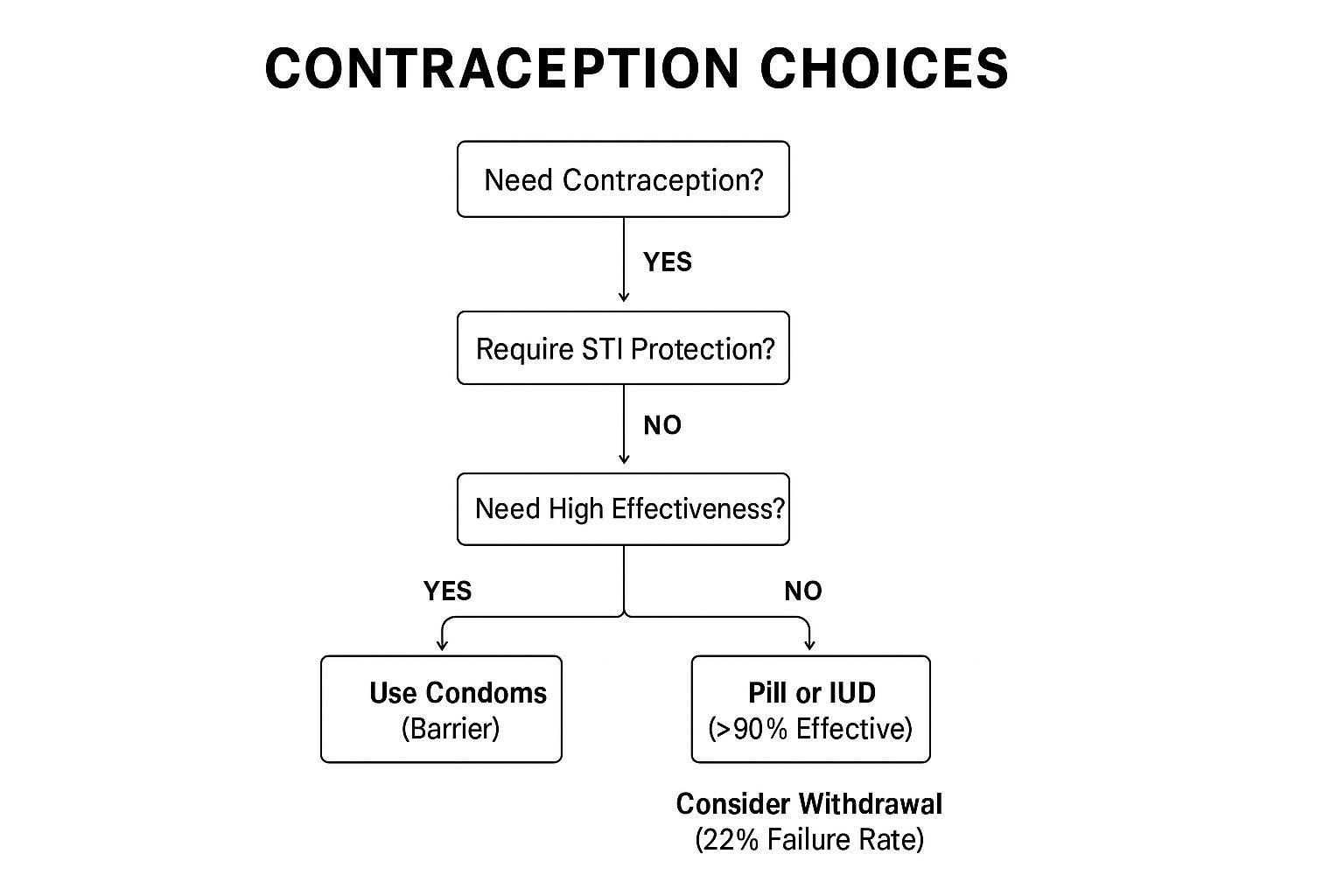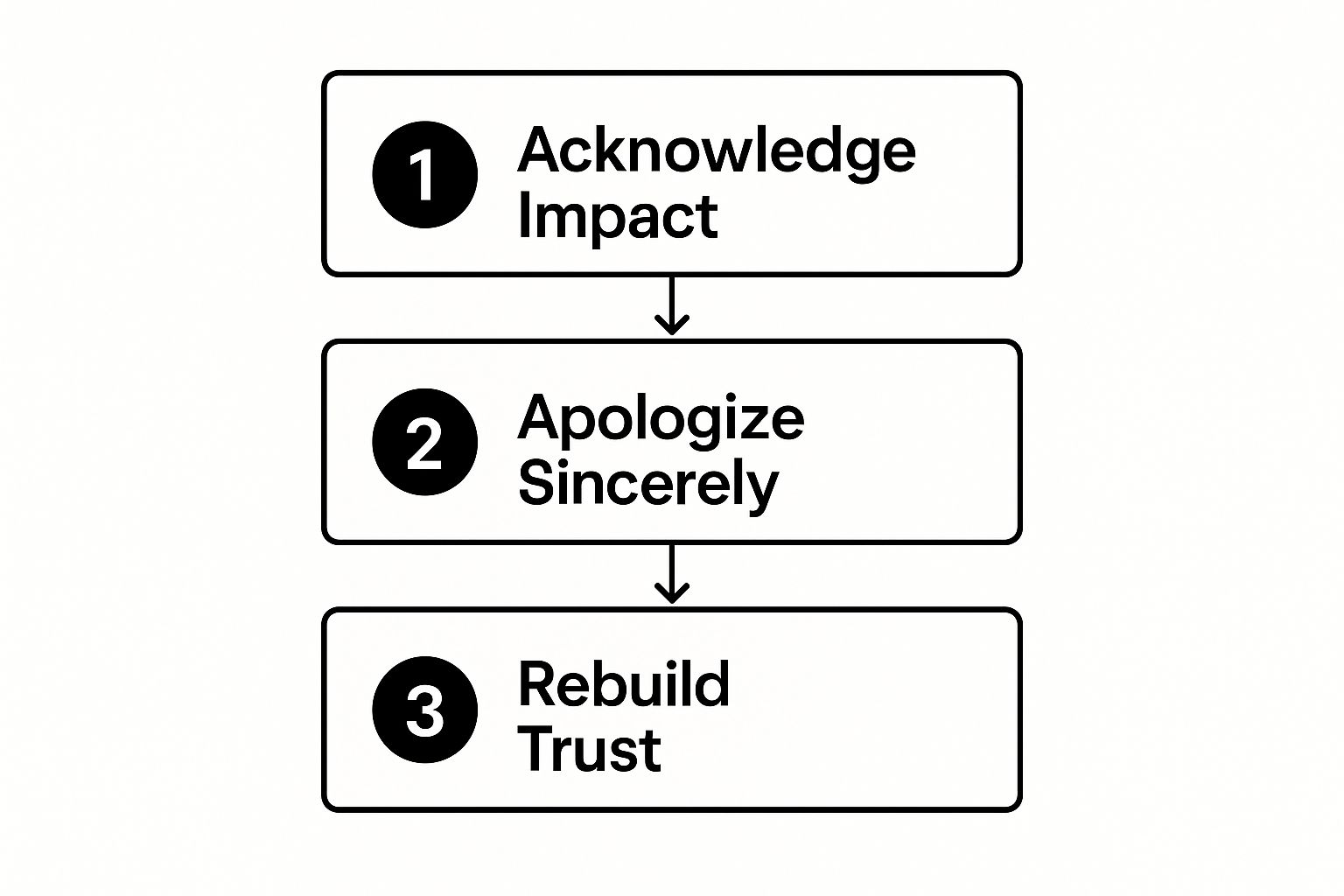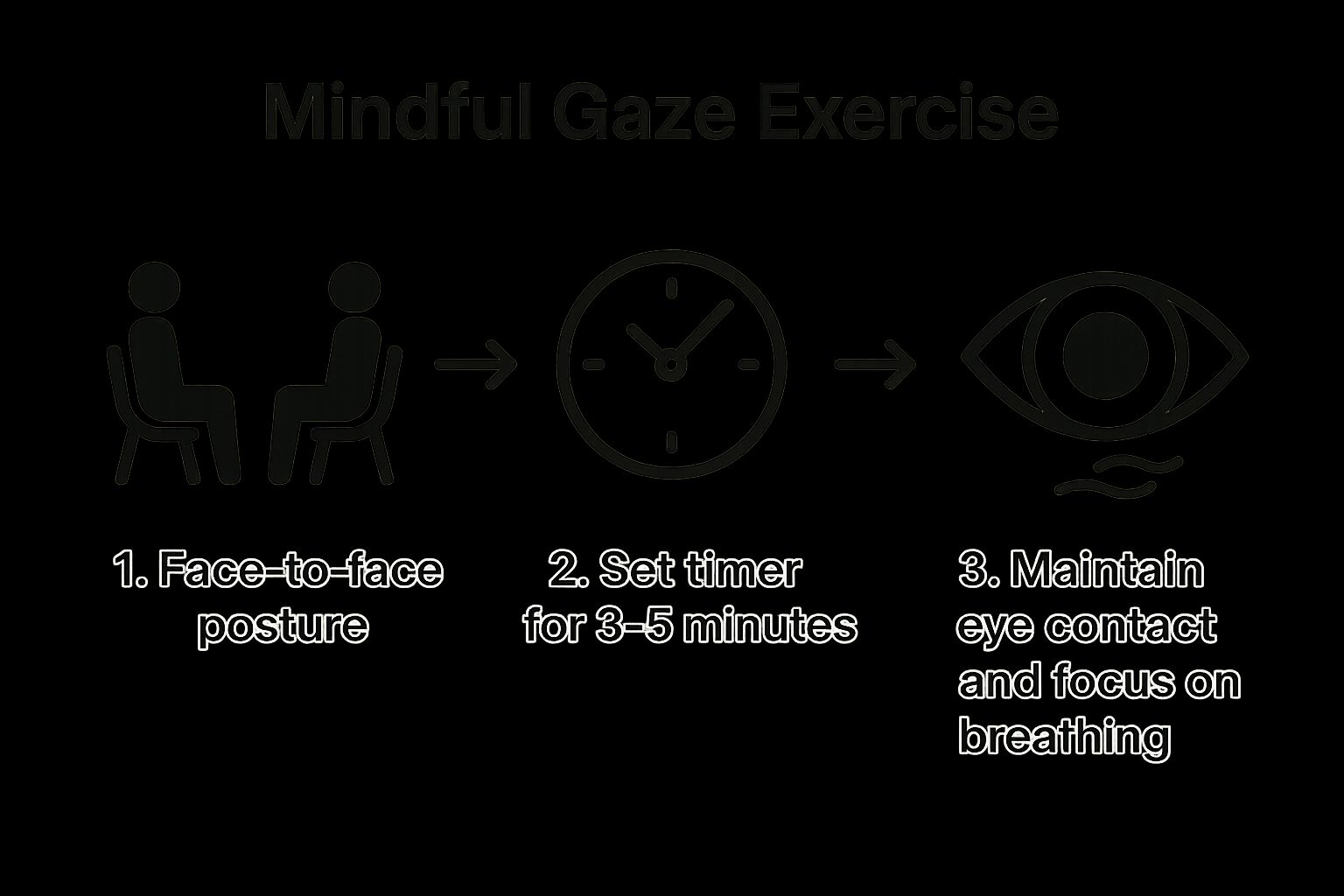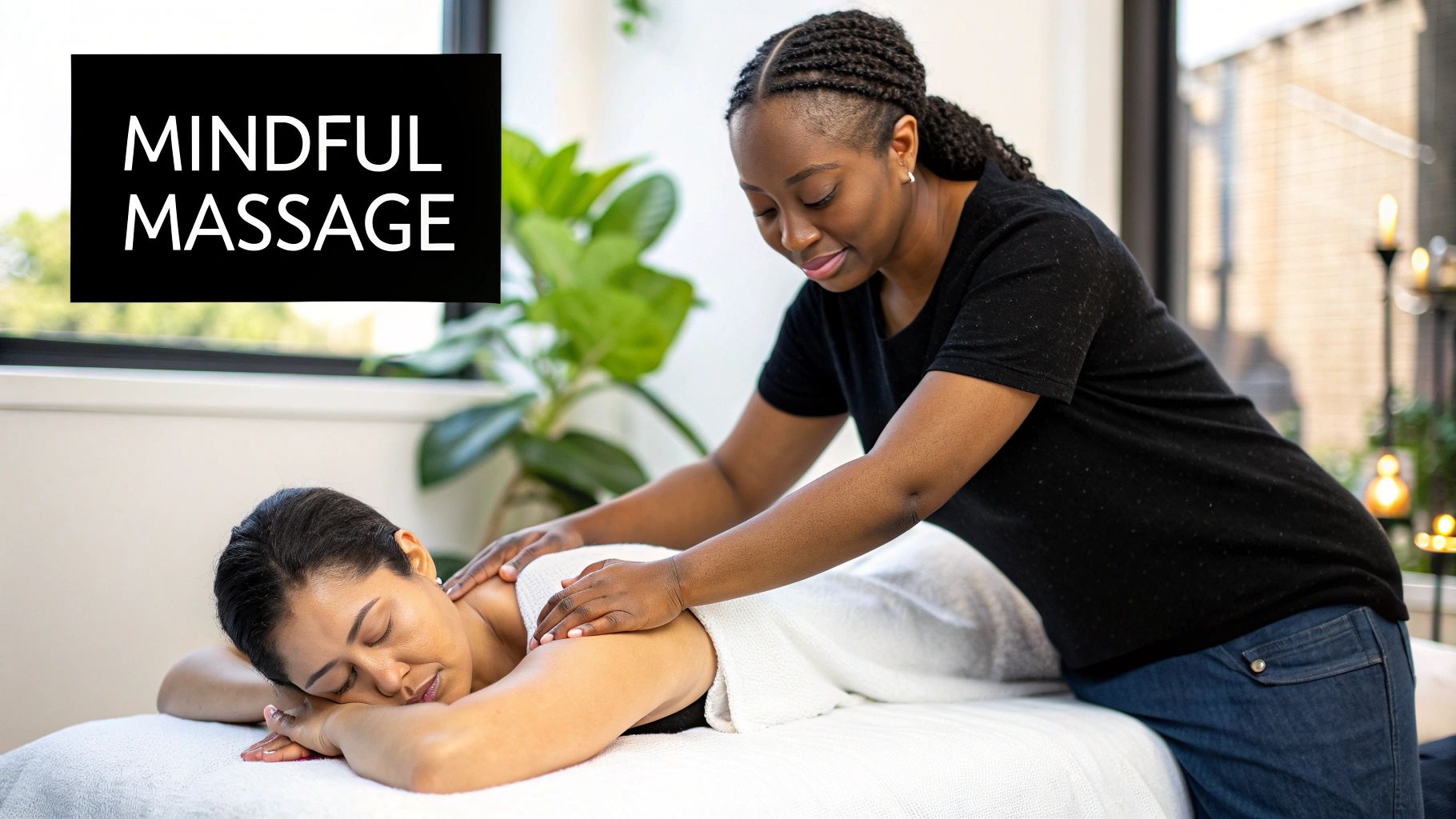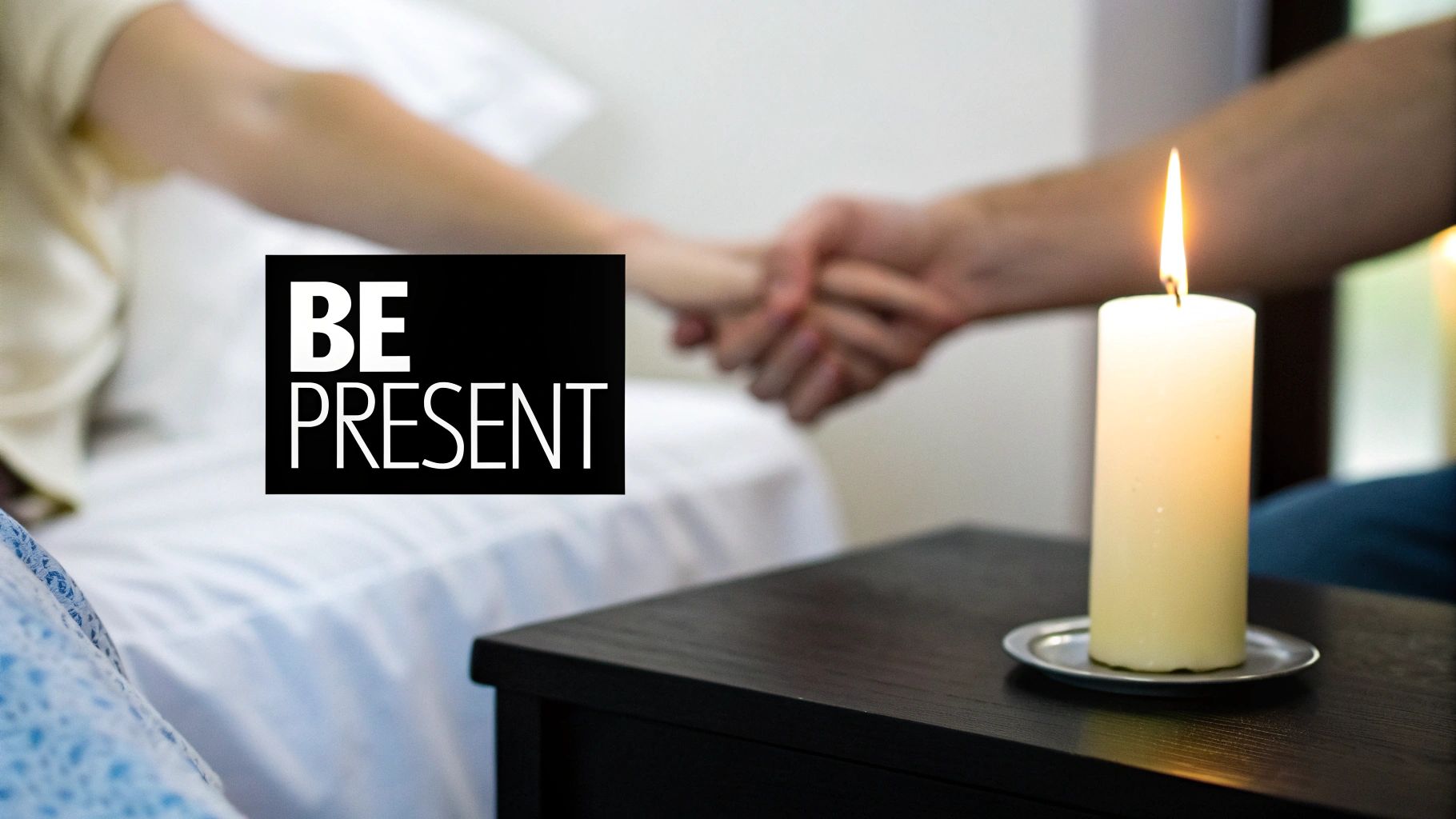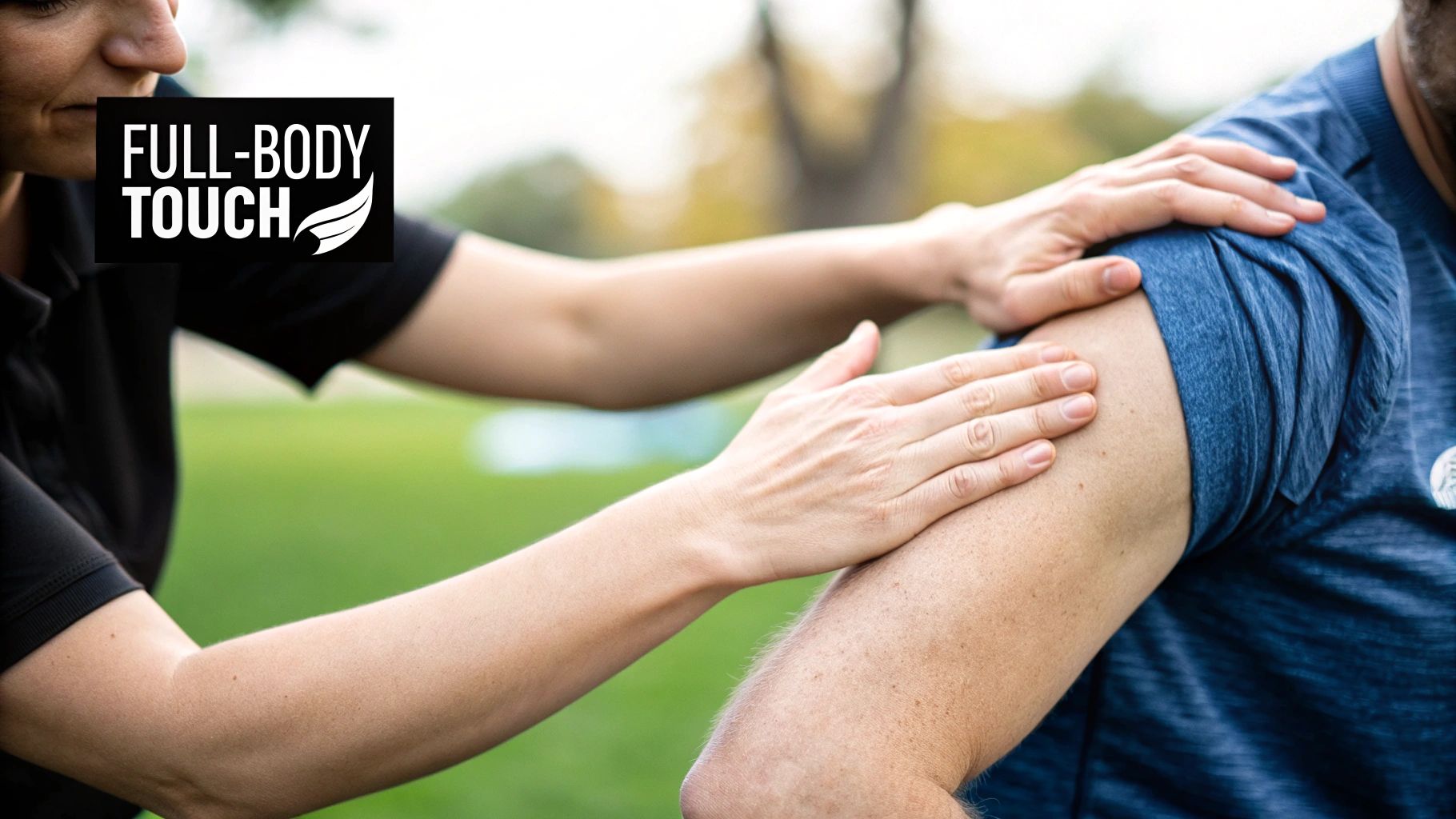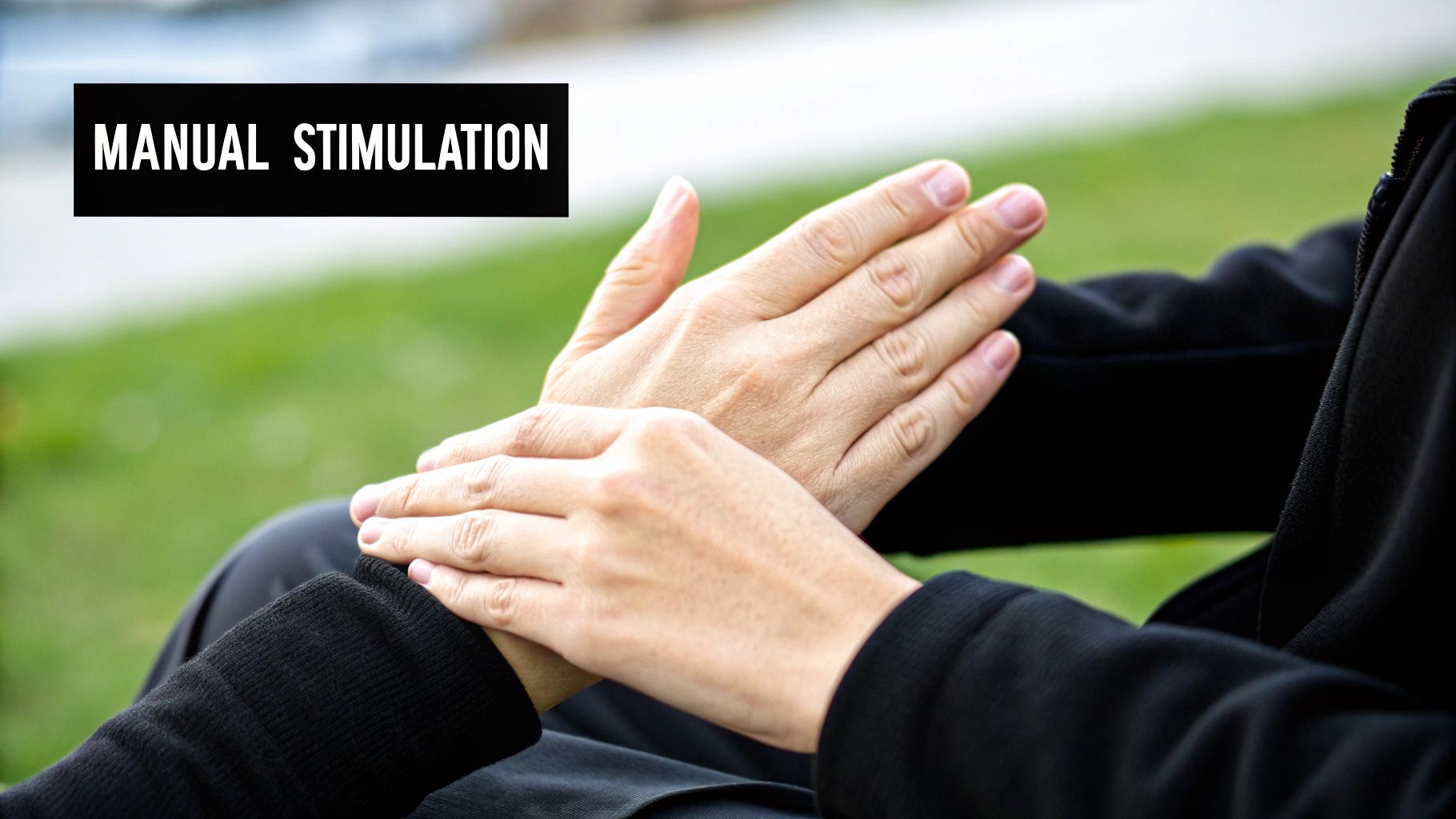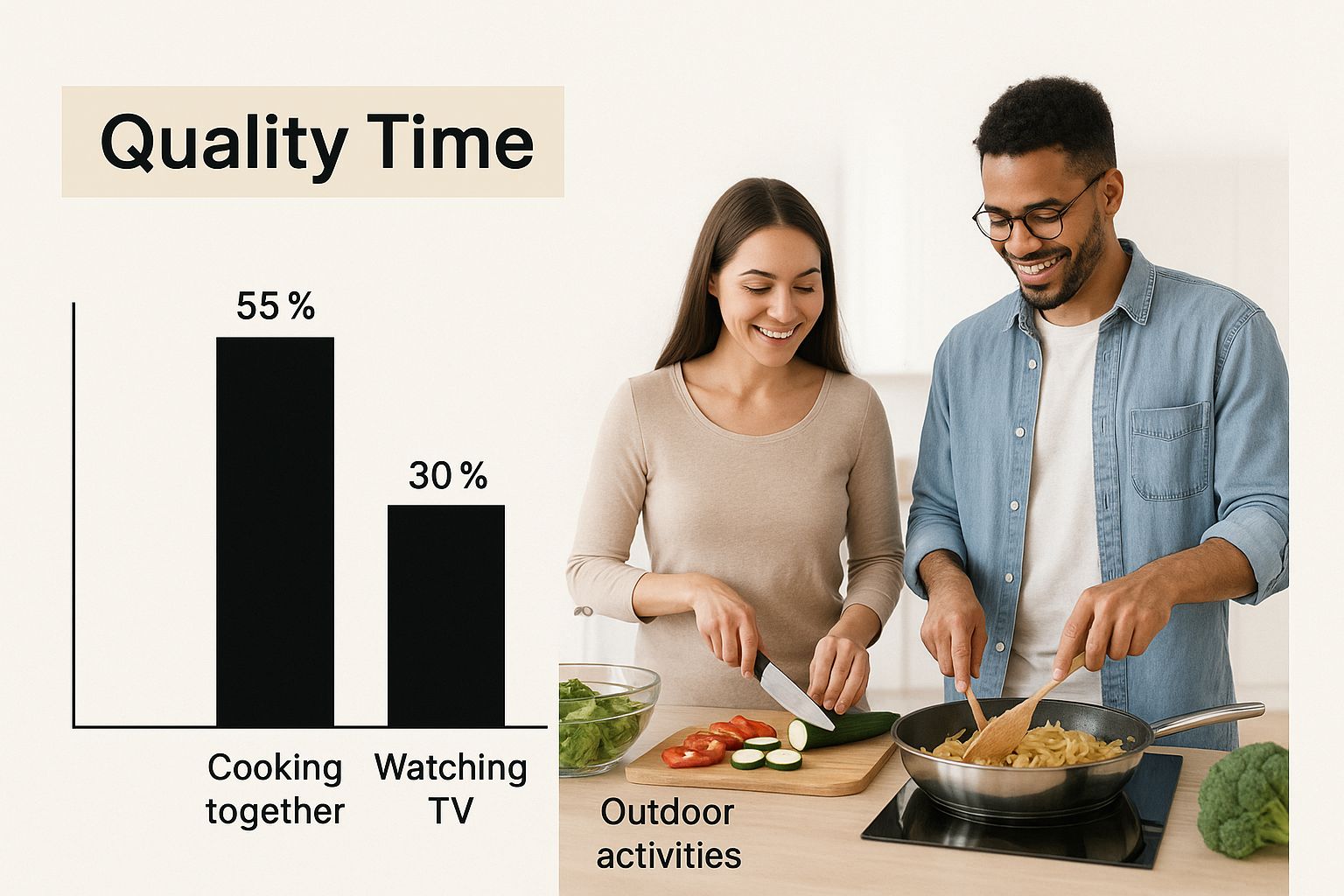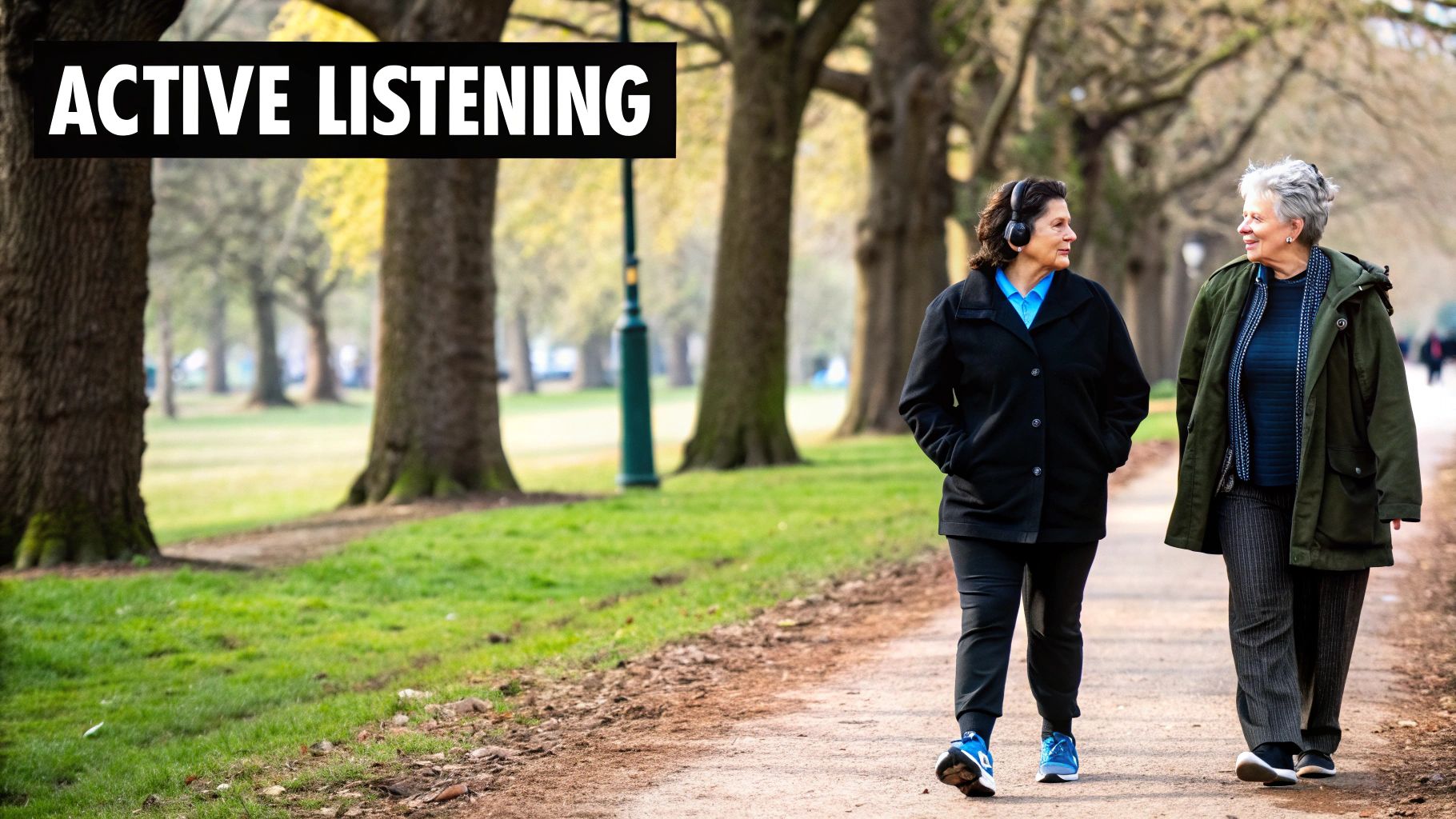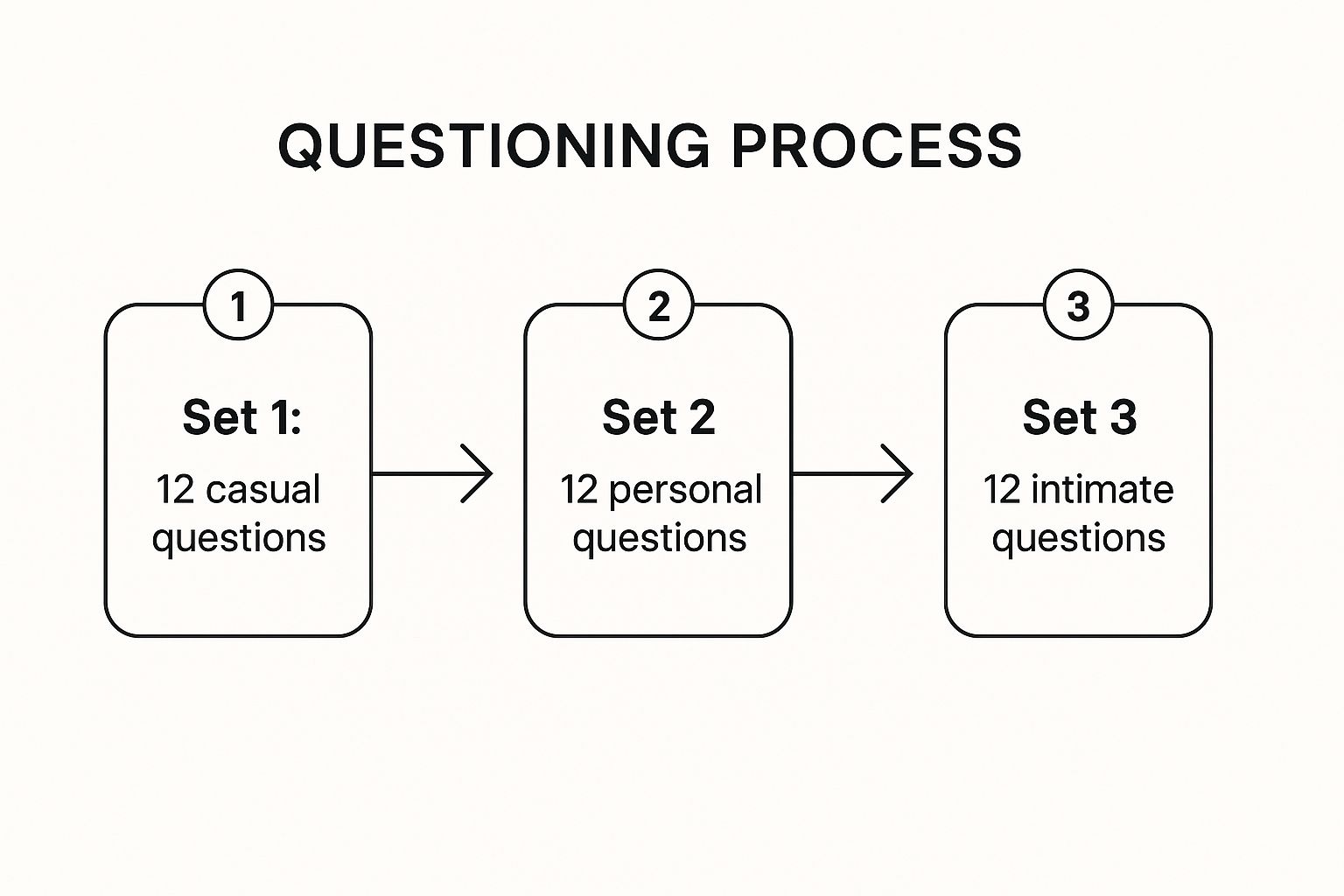Top 6 Best Fingering Positions for Maximum Pleasure in 2025

Unlocking the Secrets to Amazing Fingering
Want to take your fingering skills to the next level? This guide reveals six of the best fingering positions to maximize pleasure for your partner. Learn essential techniques like the basic position, extended reach, thumb-under, pivoting, and ergonomic approaches. Whether you're just starting out or looking to refine your technique, mastering these positions will unlock intense orgasms and deeper intimacy. Discover the secrets to amazing fingering and become a true pleasure artist.
1. Basic Position Fingering Technique
The Basic Position Fingering Technique, often referred to as the home position, is the cornerstone of musical instrument learning, particularly for piano and string instruments. It serves as the foundational framework upon which more complex techniques are built. For pianists, this involves placing the right-hand thumb on middle C and the left-hand thumb on the C an octave below, with each subsequent finger resting on the consecutive white keys. String players, on the other hand, utilize the first position without any extensions or shifts, ensuring a consistent and comfortable starting point. This standardized approach promotes proper hand shape, finger spacing, and minimizes strain, making it ideal for beginners.

One of the key benefits of the basic position is its ability to establish a comfortable hand position with minimal strain, reducing the risk of injury, especially during long practice sessions. It covers one octave per hand on the piano, providing a sufficient range for initial learning and exploration. This technique is fundamental for developing proper muscle memory and consistent hand shape, essential elements for smooth transitions between notes and preparing for more advanced techniques. Think of it as building a strong foundation for a house – the basic position ensures your technique is solid from the very beginning. Examples of its implementation include playing C major scales in the first position on the piano, working through first position exercises in the Suzuki violin method, practicing basic position studies in Carl Czerny's piano exercises, and tackling first position etudes in Sevcik's violin method.
While the basic position offers numerous advantages, especially for beginners, it also has some limitations. Its restricted range without position shifting can feel constraining for experienced players. Certain musical passages may require more complex fingerings beyond the scope of the basic position, necessitating adaptation. Moreover, individuals with different hand sizes may need to make adjustments for optimal comfort and reach.
To effectively utilize the basic position, maintain relaxed, level wrists, and curve your fingers as if holding a small ball. Start practicing with slow, deliberate movements, gradually increasing speed as your proficiency improves. Regularly checking your hand position using a mirror can help ensure proper form and prevent bad habits. Mastering the basic position allows for the development of more nuanced and expressive playing techniques in the future. This approach was popularized by influential figures like Carl Czerny and Alfred Cortot in piano pedagogy, Leopold Mozart in violin methodology, and Shinichi Suzuki in string instrument instruction.
This foundational technique deserves its place on the list of best fingering positions because it establishes crucial hand positioning and finger control principles. It provides a solid starting point for beginners and allows for consistent, strain-free playing. This is crucial for building a strong foundation in any instrument and exploring various musical pieces. You can Learn more about Basic Position Fingering Technique, although the provided link seems unrelated to the topic of musical instrument fingering. It's important to note that the principles discussed here are focused on proper hand positioning and technique for musical instruments. Please consult with a qualified music instructor for personalized guidance.
2. Extended Position Technique
Among the best fingering positions, the Extended Position Technique stands out for its ability to unlock a wider range of musical expression. This technique involves stretching the fingers beyond their normal span to reach notes outside the standard hand position without shifting the entire hand. This is crucial for playing larger intervals, chords, and arpeggios smoothly and seamlessly, maintaining continuity and minimizing interruptions caused by constant position shifts. Mastering this technique contributes significantly to technical flexibility and hand independence, essential for tackling complex musical passages.

This technique revolves around controlled stretching between the fingers while maintaining anchor points for stability. Instead of relocating the entire hand, the player strategically extends their reach, creating a smoother legato between widely spaced notes. This approach is especially beneficial when playing pieces with large interval jumps or rapid arpeggios where shifting positions would interrupt the flow and phrasing of the music.
The benefits of the Extended Position Technique are numerous. It reduces the need for frequent position shifts, enabling the execution of wider intervals and complex harmonic passages without breaking phrases. It's a key element in achieving advanced repertoire, particularly in works by composers like Chopin, Liszt, and Paganini who frequently employed wide-spanning chords and arpeggios. Think of the dramatic flair of a Liszt Rhapsody or the intricate runs in a Chopin Etude; these pieces often demand the use of extended positions. Similarly, the polyphonic textures of Bach's works and the wide-spanning arpeggios in Beethoven's sonatas often require significant finger independence achievable through this technique. Even beyond piano, extended positions feature heavily in works like Paganini's Caprices for violin, highlighting the technique's versatility across instruments.
However, like any advanced technique, extended positions have potential drawbacks. Over-stretching can cause strain and potential injury, particularly for players with smaller hands. Accuracy can also be challenging, requiring dedicated practice to maintain control and precision in these extended positions. It's crucial to remember that this technique is not intended for prolonged use in extreme extensions, but rather for strategically navigating wider intervals and complex passages.
To effectively incorporate extended positions into your playing, consider these tips:
- Never force extensions: Listen to your body and avoid stretching beyond a comfortable reach.
- Practice slowly and relaxed: Start with slow, deliberate practice, ensuring your hands remain relaxed throughout the exercise.
- Strategic fingering: Choose fingerings that minimize extreme stretches and optimize hand position.
- Gradual stretching exercises: Incorporate gradual stretching exercises into your daily practice routine to build flexibility over time.
- Release tension: Immediately release tension after playing extended passages to prevent strain.
The Extended Position Technique deserves its place on the list of best fingering positions because it represents a significant step towards technical mastery. While not a primary position itself, it enhances the player's ability to navigate the keyboard or fingerboard with greater agility and expressiveness. By understanding its mechanics, benefits, and potential pitfalls, musicians can leverage this technique to unlock a new level of musical fluency and unlock the potential for greater artistic expression.
3. Substitution Fingering
Substitution fingering, a crucial technique for achieving seamless legato and optimizing hand position, earns its place among the best fingering positions. It involves replacing one finger with another on the same key or string without lifting the key or releasing the string. This silent exchange allows for smoother transitions and improved hand positioning for subsequent notes, enhancing both technical proficiency and musical expression. This technique is particularly valuable in piano playing, but variations of it exist for other instruments as well.

The core of substitution fingering lies in its silent and seamless execution. One finger sustains the note while another replaces it, enabling the first finger to prepare for the next passage. This facilitates smoother voice leading, elegant phrasing, and repositioning without breaking the sustained sound. For example, holding a note with the thumb while the index finger replaces it allows the thumb to move to a more advantageous position for a subsequent leap or arpeggio.
Benefits of Substitution Fingering:
- Seamless Legato: Creates a truly connected and flowing sound impossible to achieve with traditional finger lifts and re-strikes.
- Increased Efficiency: Reduces hand movement and conserves energy, crucial for demanding passages.
- Prevents Awkward Stretches: Eliminates the need for uncomfortable finger crossings and extensions.
- Enhanced Musical Expression: Allows for nuanced phrasing and dynamic control, leading to more expressive performances.
Drawbacks of Substitution Fingering:
- Technical Difficulty: Requires precise timing and coordination, posing a challenge for beginners.
- Risk of Accents: Poorly executed substitutions can create unintended accents, disrupting the flow of the music.
- Practice Intensive: Demands dedicated practice to master the subtle control required for clean execution.
When and Why to Use Substitution Fingering:
Substitution fingering is especially beneficial in passages requiring sustained notes within moving lines, intricate legato passages, and situations where awkward stretches or finger crossings would otherwise be necessary. This technique shines in works like Debussy's piano compositions, which demand subtle nuances and seamless legato. Bach's Well-Tempered Clavier, with its intricate voice leading, also benefits greatly from substitution fingering, allowing for clear articulation of individual voices within a sustained texture. Similarly, Chopin's Nocturnes, characterized by long, sustained melodic lines, often require this technique for a truly expressive performance. Organ music, where notes must often be sustained while other voices move, also relies heavily on substitution fingering principles.
Tips for Mastering Substitution Fingering:
- Slow Practice: Begin by practicing very slowly, exaggerating the motions to develop control and awareness.
- Consistent Pressure: Focus on maintaining even pressure on the key throughout the substitution.
- Strategic Application: Use substitution to prepare for challenging passages and avoid unnecessary substitutions in simpler sections.
Influential Figures in Substitution Fingering:
The use of substitution fingering can be traced back to composers like Johann Sebastian Bach, with early documented use in his keyboard works. Carl Philipp Emanuel Bach further elaborated on the technique in his treatise on keyboard playing. More recently, pianists like Alfred Brendel and Murray Perahia have refined and exemplified the masterful application of substitution fingering in their performances, particularly in interpretations of Bach. By understanding and applying this technique, musicians can unlock a new level of fluidity and expressiveness in their playing.
4. Thumb-Under Technique
The thumb-under technique (also called thumb passage) is a cornerstone of best fingering positions, especially crucial for piano and keyboard players. This fundamental approach allows for smooth navigation of scales and arpeggios. It involves passing the thumb under the palm while the other fingers are playing, enabling the hand to move across the keyboard without interrupting the sound or phrasing. This creates seamless transitions and is essential for executing scales and arpeggios efficiently.

The benefits of mastering the thumb-under technique are numerous. It enables fluid scale passages spanning multiple octaves, maintains a legato connection between notes, and forms the basis of classical piano technique. Its efficiency in keyboard navigation is unmatched, allowing for quick and smooth transitions between notes. For instance, playing a C major scale using the standard 1-2-3, 1-2-3-4 fingering pattern demonstrates the seamless flow facilitated by the thumb passage. This technique is prominently featured in musical pieces like Mozart's sonatas, known for their extensive scale passages, as well as technical exercises like Hanon exercises and Czerny's School of Velocity etudes, which specifically focus on developing thumb passage proficiency.
However, the thumb-under technique does present challenges. If executed poorly, it can lead to unevenness in tone and tension in the wrist. Beginners often find it difficult to master smoothly, requiring dedicated practice. Furthermore, some modern approaches might favor alternative techniques in certain musical contexts.
To achieve a proficient and injury-free thumb-under technique, consider these tips:
- Wrist Flexibility: Maintain a flexible wrist throughout the thumb passage. Avoid stiffness or locking the wrist.
- Thumb Positioning: Position the thumb close to the key it will play next. This anticipatory positioning prepares for a smoother transition.
- Slow Practice: Practice slowly with exaggerated movements initially. This helps develop muscle memory and coordination before increasing speed.
- Forearm Rotation: Use a slight inward rotation of the forearm to facilitate thumb movement. This aids in the natural passing motion.
- Elbow Control: Avoid raising the elbow excessively during the thumb passage. Keep the elbow relatively stable to maintain control and prevent tension.
The thumb-under technique was popularized and standardized through the works of influential figures like Carl Czerny, whose technical exercises heavily emphasize its importance, and Charles-Louis Hanon, whose "The Virtuoso Pianist" exercises are staples for piano students. Josef Lhevinne further refined the approach to thumb technique, while Muzio Clementi was an early advocate of its use.
This technique’s ability to facilitate smooth transitions and fluid playing earns it a place among the best fingering positions. Its historical significance, widespread use in classical repertoire, and its foundational role in piano technique underscore its importance for any aspiring pianist. While it requires practice and dedication to master, the thumb-under technique remains a valuable tool for achieving musical fluency and expressiveness.
5. Pivot Fingering Technique
The Pivot Fingering Technique earns its place among the best fingering positions due to its ability to facilitate smooth and controlled transitions, especially across wider intervals. This technique utilizes a single finger as an anchor, or "pivot" point, allowing the rest of the hand to rotate or shift around it. Think of it like a compass—the pivot finger remains fixed like the needle's point, while the rest of the hand moves like the rotating compass housing. This minimizes unnecessary hand movement and creates a seamless connection between otherwise disconnected positions, which is crucial for achieving fluidity and accuracy.
This approach is particularly effective for passages with wide leaps or rapid position changes. For string instruments like the violin and cello, pivot fingering is essential for shifting positions cleanly and maintaining accurate intonation. On the piano, it allows for the execution of certain passages, such as arpeggios, with minimal hand displacement and greater control. For example, a pianist playing a wide arpeggio might anchor their thumb on a low note while the other fingers reach for the higher notes. Similarly, a violinist might use a "guide finger" during a position change, keeping that finger in contact with the string as the hand shifts up or down the neck. Other examples include cello position changes with maintained finger contact and guitar position shifts using reference fingers. Learn more about Pivot Fingering Technique (This link provides further context regarding how pivoting techniques can enhance control and precision, though in a different context.)
Features and Benefits:
- Stability: The anchored finger provides a stable reference point during hand movements.
- Reduced Movement: Minimizes excess hand motion, leading to greater efficiency and speed.
- Smooth Transitions: Facilitates seamless shifts between positions and across intervals.
- Connection: Bridges the gap between discontinuous notes or hand positions.
Pros:
- Provides stability during position shifts, reducing the risk of inaccurate intonation, particularly in string instruments.
- Enables smoother, more connected transitions between passages.
- Particularly effective for passages with wide leaps.
Cons:
- Can create tension if the pivot finger is pressed too firmly.
- May be challenging to maintain consistent tone through the pivot.
- Requires a solid understanding of hand positioning and instrument technique.
- Not suitable for all musical contexts.
Tips for Effective Pivot Fingering:
- Relaxed Contact: Keep the pivot finger relaxed but in firm contact with the instrument. Avoid pressing down too hard, as this can create tension and restrict movement.
- Slow Practice: Start by practicing slow, deliberate pivots to develop the necessary control and coordination. Gradually increase speed as you become more comfortable.
- Body Awareness: Maintain awareness of your arm weight and balance during pivots. This will help you avoid unnecessary tension and maintain a fluid motion.
- Strategic Application: Use pivot fingering strategically to bridge technically challenging passages or to enhance the smoothness of your playing.
The Pivot Fingering Technique, championed by influential pedagogues like Ivan Galamian (violin), Janos Starker (cello), Gary Graffman (piano), and Dorothy DeLay (violin), offers a valuable approach to achieving greater control, accuracy, and fluidity in musical performance. Mastering this technique can significantly enhance your playing and open up new possibilities for musical expression.
6. Ergonomic Fingering
Ergonomic fingering stands out among the best fingering positions because it prioritizes your physical comfort, efficiency of movement, and injury prevention above all else. Instead of rigidly adhering to traditional fingering patterns, this approach recognizes that everyone's hands are different. It tailors fingerings to your individual hand size, structure, and physical capabilities. This is increasingly important in modern instrumental pedagogy as awareness of performance-related injuries like carpal tunnel syndrome and tendonitis has grown.
This method works by customizing fingerings based on your unique anatomy. It considers the biomechanical efficiency of each movement, ensuring that your playing is both effective and comfortable. While traditional methods often prescribe one-size-fits-all fingerings, ergonomic fingering acknowledges that what works for one person may not work for another. This personalized approach can significantly improve your technical execution, especially for challenging passages.
Examples of successful implementation include Rosalyn Tureck's alternative Bach fingerings designed for smaller hands, and Glenn Gould's unconventional piano fingering choices, showcasing how diverging from tradition can lead to virtuosity. Modified violin fingerings for players with shorter fingers and alternative guitar fingerings that avoid barré chords for beginners also demonstrate the adaptability of this approach.
Here are some actionable tips to incorporate ergonomic fingering into your practice:
- Experiment: Be willing to experiment with non-traditional fingerings. Don't be afraid to deviate from what's written in the music if it feels uncomfortable.
- Listen to Your Body: Pay attention to any discomfort or pain. Avoid fingerings that cause strain.
- Seek Expert Advice: Consult with teachers knowledgeable about biomechanics and injury prevention. They can provide personalized guidance and help you develop healthy playing habits.
- Document Your Findings: Keep track of successful alternative fingerings in your scores for future reference.
- Think Holistically: Consider hand rotation and arm positioning as part of your fingering choices. A holistic approach optimizes the entire playing mechanism.
Ergonomic fingering offers numerous benefits:
- Injury Prevention: It significantly reduces the risk of repetitive strain injuries, allowing for a longer and healthier playing career.
- Accommodation: It accommodates different hand sizes and structures, making playing more accessible to everyone.
- Improved Technique: It can improve technical execution, particularly in demanding passages.
- Longevity: By prioritizing health and comfort, ergonomic fingering promotes longevity in professional playing careers.
However, there are some potential drawbacks:
- Clash with Tradition: This approach may conflict with traditional teaching methods and established fingerings.
- Individualized Instruction: It requires more individualized instruction, which can be more time-consuming and potentially more expensive.
- Standardization Challenges: It can lead to idiosyncratic techniques that are challenging to standardize in teaching.
- Interpretive Shifts: Sometimes, prioritizing ergonomics might require sacrificing certain traditional interpretive approaches linked to specific fingerings.
When should you use this approach? If you're experiencing pain or discomfort while playing, if you have smaller or larger than average hands, or if you're simply looking to optimize your technique and prevent future injuries, ergonomic fingering is worth exploring. Learn more about Ergonomic Fingering. This approach emphasizes the importance of adapting best fingering positions to your individual needs, ensuring a comfortable and sustainable playing experience. This attention to individual needs secures its spot among the best fingering positions, highlighting how comfort and efficiency can elevate your playing. Pioneering figures like Dorothy Taubman (Taubman Approach to piano technique), Seymour Fink (biomechanical approach to piano playing), Barbara Lister-Sink (injury-preventive keyboard technique), and Thomas Mark (ergonomic principles for musicians) have further popularized these principles.
Comparison of 6 Fingering Techniques
| Fingering Technique | 🔄 Implementation Complexity | ⚡ Resource Requirements | 📊 Expected Outcomes | 💡 Ideal Use Cases | ⭐ Key Advantages |
|---|---|---|---|---|---|
| Basic Position Fingering | Low – foundational, easy to learn | Minimal – standard instrument setup | Solid foundation, consistent hand shape | Beginners, basic scale exercises | Builds muscle memory, reduces strain |
| Extended Position Technique | High – requires advanced control | Moderate – requires hand flexibility | Greater reach, smooth legato on wide intervals | Advanced repertoire, large intervals | Minimizes position shifts, improves flexibility |
| Substitution Fingering | High – demands precise timing | Moderate – focused practice needed | Seamless legato, efficient transitions | Legato passages, voice leading | Smooth phrasing, reduces hand movement |
| Thumb-Under Technique | Moderate – coordination focused | Standard – piano or keyboards | Fluid scale/arpeggio execution | Scale/arpeggio runs, classical piano | Ensures legato, enables octave spans |
| Pivot Fingering Technique | Moderate – requires hand awareness | Minimal – technique-based | Smooth shifts, stability in transitions | String instrument position changes, piano arpeggios | Stability, reduces unnecessary movement |
| Ergonomic Fingering | Variable – highly individualized | High – needs tailored instruction | Injury prevention, comfortable playing | Musicians with hand-size differences, injury risk | Custom comfort, injury reduction |
Elevate Your Fingering Game
From the foundational Basic Position and Extended Position techniques to the more nuanced Substitution, Thumb-Under, Pivot, and Ergonomic approaches, mastering these six fingering positions offers a diverse toolkit for enhancing pleasure. Remember, the best fingering positions aren't just about technique; they're about understanding your partner's unique anatomy and preferences. By incorporating variety, you'll not only keep things exciting but also discover what truly resonates with both of you. Looking for inspiration to elevate your skills? Check out these great review examples from Testimonial Donut for insights into how powerful positive feedback can be. Applying these principles to your intimate communication can be incredibly rewarding.
Communication is key to unlocking truly satisfying experiences. Talk to your partner, experiment together, and enjoy the journey of exploration. Mastering these fingering techniques empowers you to create deeply pleasurable experiences, transforming intimate moments into shared expressions of connection and desire.
Want to take your understanding of female anatomy and pleasure to the next level? G-Spot 101 offers a comprehensive guide to female pleasure, delving deeper into the techniques mentioned here and more, empowering you to become a true master of the best fingering positions. Start your journey towards greater intimacy and pleasure today!




